Cementitious parging vs. coping stones—what’s better?
This past week, we started looking at a granite stone wall with a deteriorated top coping. In the picture below, which takes a closer look, you can see another area where the mortar or parging material has broken away. An area of broken cement dust and stone remains. Some of the broken debris are as fine as sand or powder, but also other areas of the broken masonry are in a form similar to pebbles.
Currently, with this debris material still in place and without a graded continuous surface, water now will hydrate the top of the wall in this section more extensively. That also leads to continuous deterioration, but now at an accelerated rate because water is retained for longer periods of time which leads to increased amounts of deterioration at each cycle of precipitation.
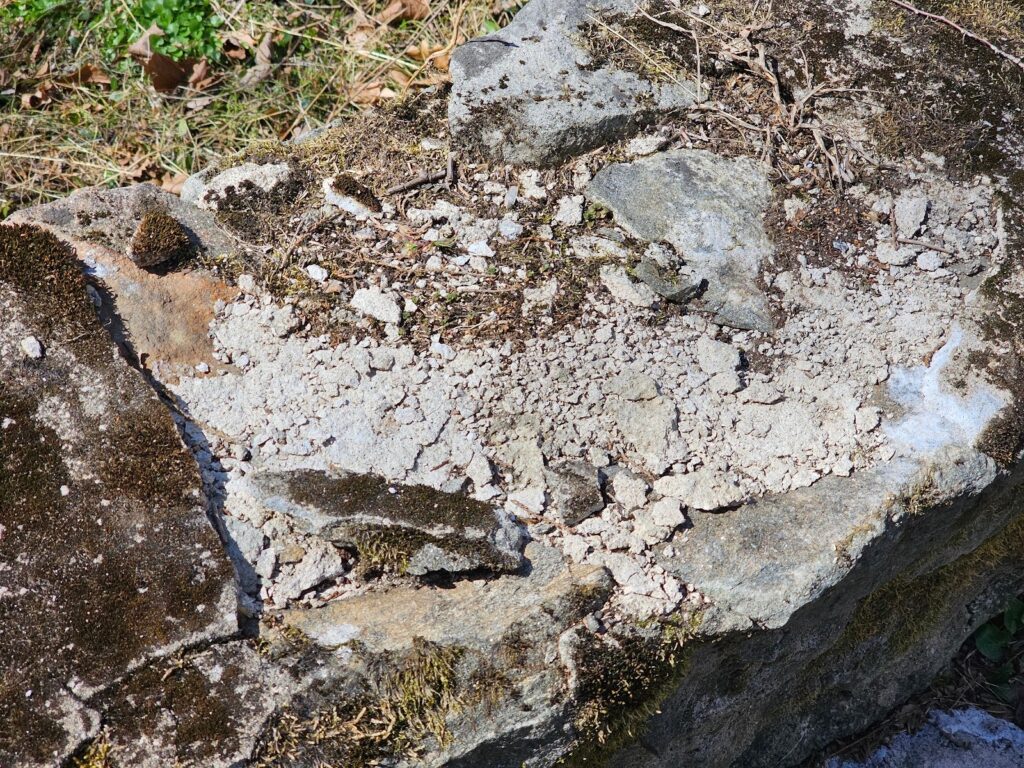
The next pictures below show those broken stones even more clearly. In some cases the broken cement material has fallen off of the top of the wall and or washed away with rainfall. We explained that the crushed and or broken type cement that resembles gravel leads to increased periods of dry out. Essentially, because water filters down through those stones and hydrates the substrate areas, it stays hydrated longer.
Where other areas of the more consistent or flatter area of the cement at the top of the wall allows water to run off without significant absorption, here it’s different, under the stones. The stones work more like a mulch does on a garden. Mulch in a garden will keep the Sun from drying out the substrate as quickly. That’s a positive condition for a garden, but here it’s negative because it’s better for the masonry to dry out more quickly. When the masonry can dry out more quickly, the water doesn’t enter quite as deeply and leads to less deterioration.
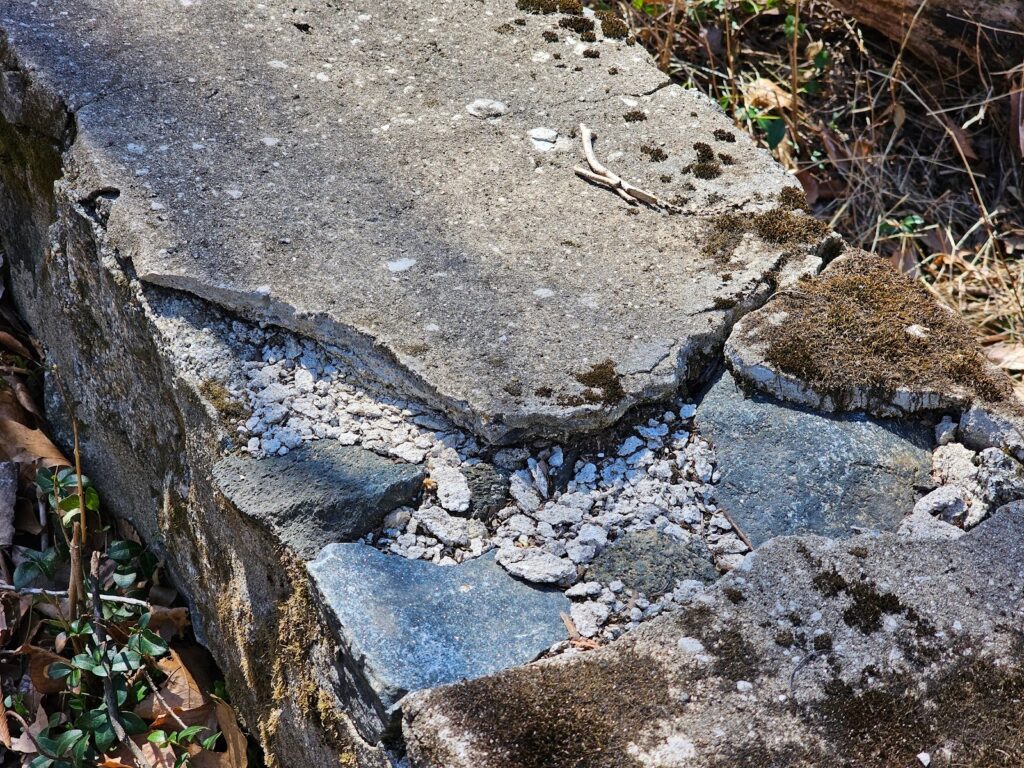
Pebbles in broken pieces of cement remain scattered about on top of the substrate stone wall. It’s probably better for the wall to have those small pieces of stone removed, but it also just exposes and deepens or increases the amount of volume of water that the pockets in the surface can hold.
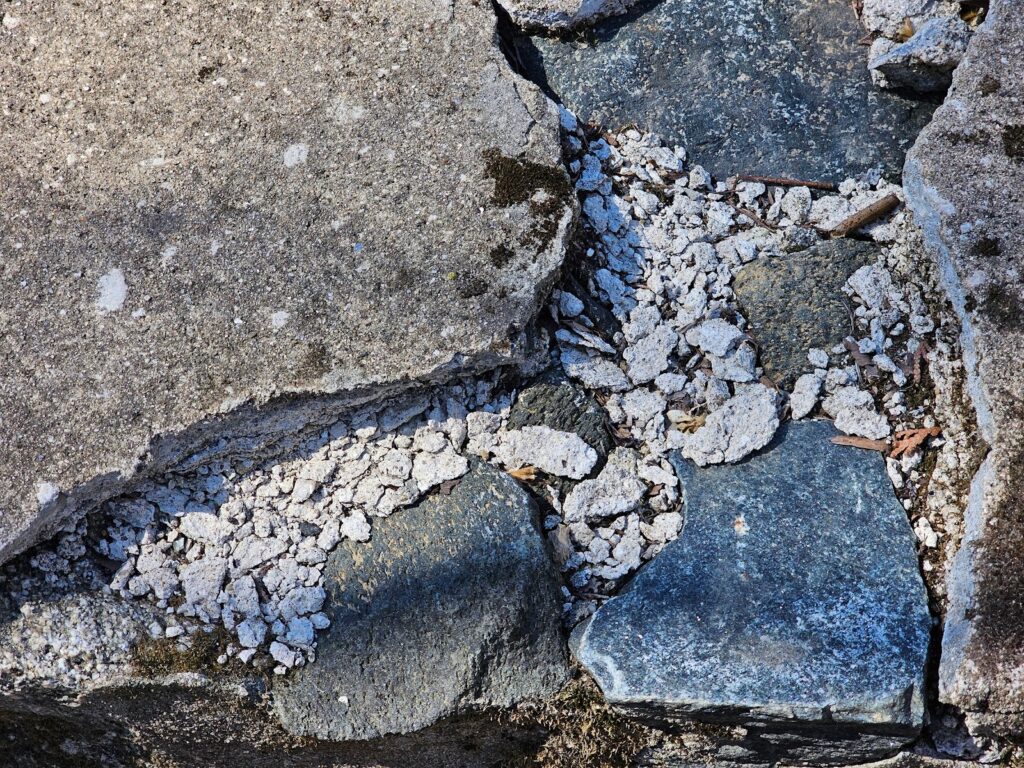
Another picture of the other broken up area of the coping follows below. Coping can be made with a variety of different materials, but with a stone wall like this it would just make sense for that coping to be made with other pieces of stone. Those stone masonry units though should be longer or wider and generally flatter. A higher ratio of the stone to mortar leads to an increased amount of durability because the weak point in these masonry is generally at the mortar joints.
This concept of deterioration applies to most types of masonry. In most cases, similar to this, the mortar joints will generally deteriorate faster than the stone. The same concept applies to brickwork and repointing. The joints of brickwork need to be restored in multiple cycles through the intended life of a brick building. This is particularly true of historic buildings where even though the brick was fired at a relatively low temperature, the bricks still have a longer life expectancy than the mortar itself.
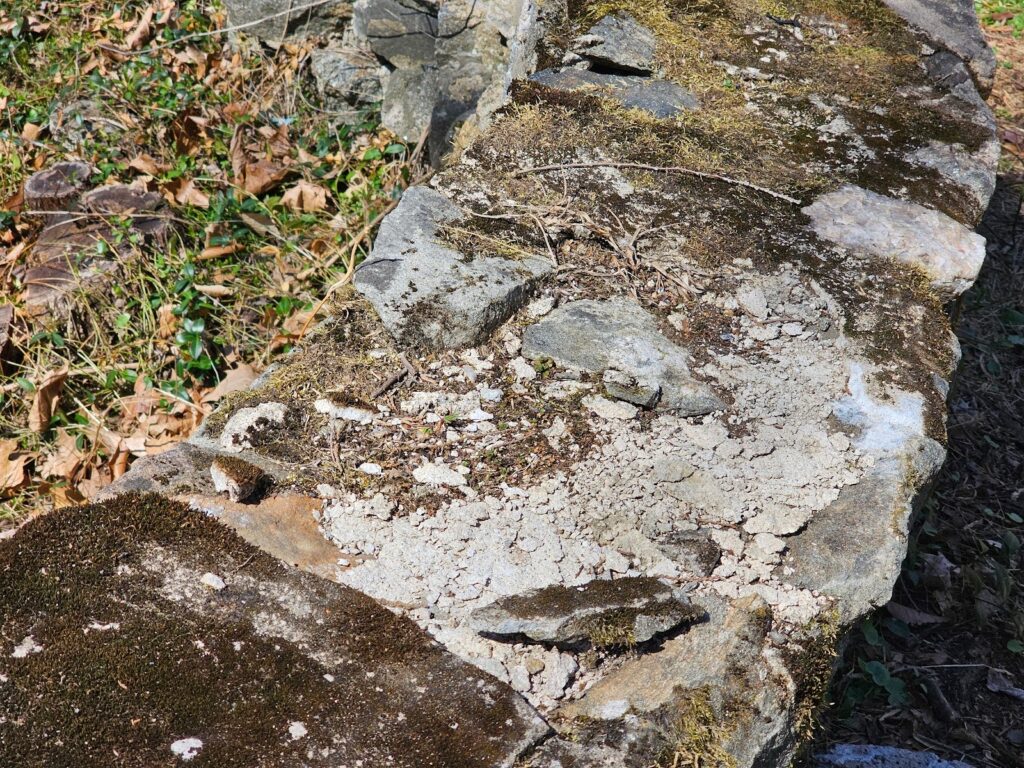
The next picture below shows a different section of the same wall. The cementitious coping is in much better condition for the majority of the portion shown in the picture below.
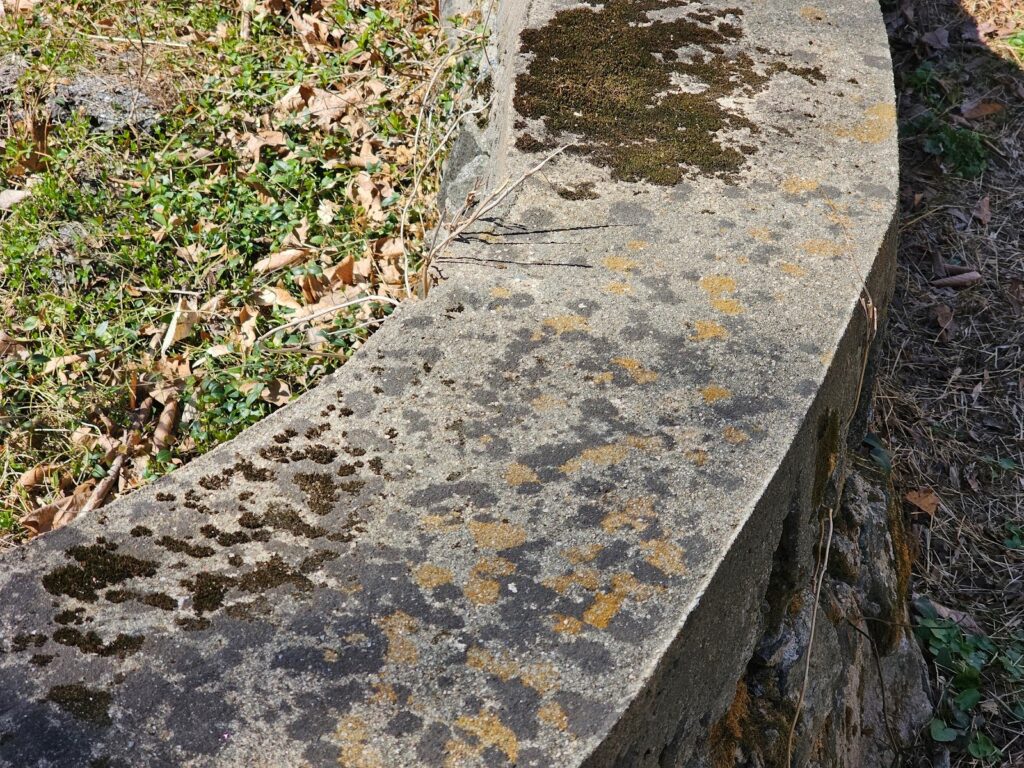
With a relatively clean right angle at the top of the wall, it looks to be in much better shape and form. You can see discoloration but that discoloration almost blends in well with the granite stone below. And, although this looks like it’s in better condition, it doesn’t look quite as natural as it would look if it were made with just granite stone, instead of being topped with a mortar or concrete like finish on the top surface.
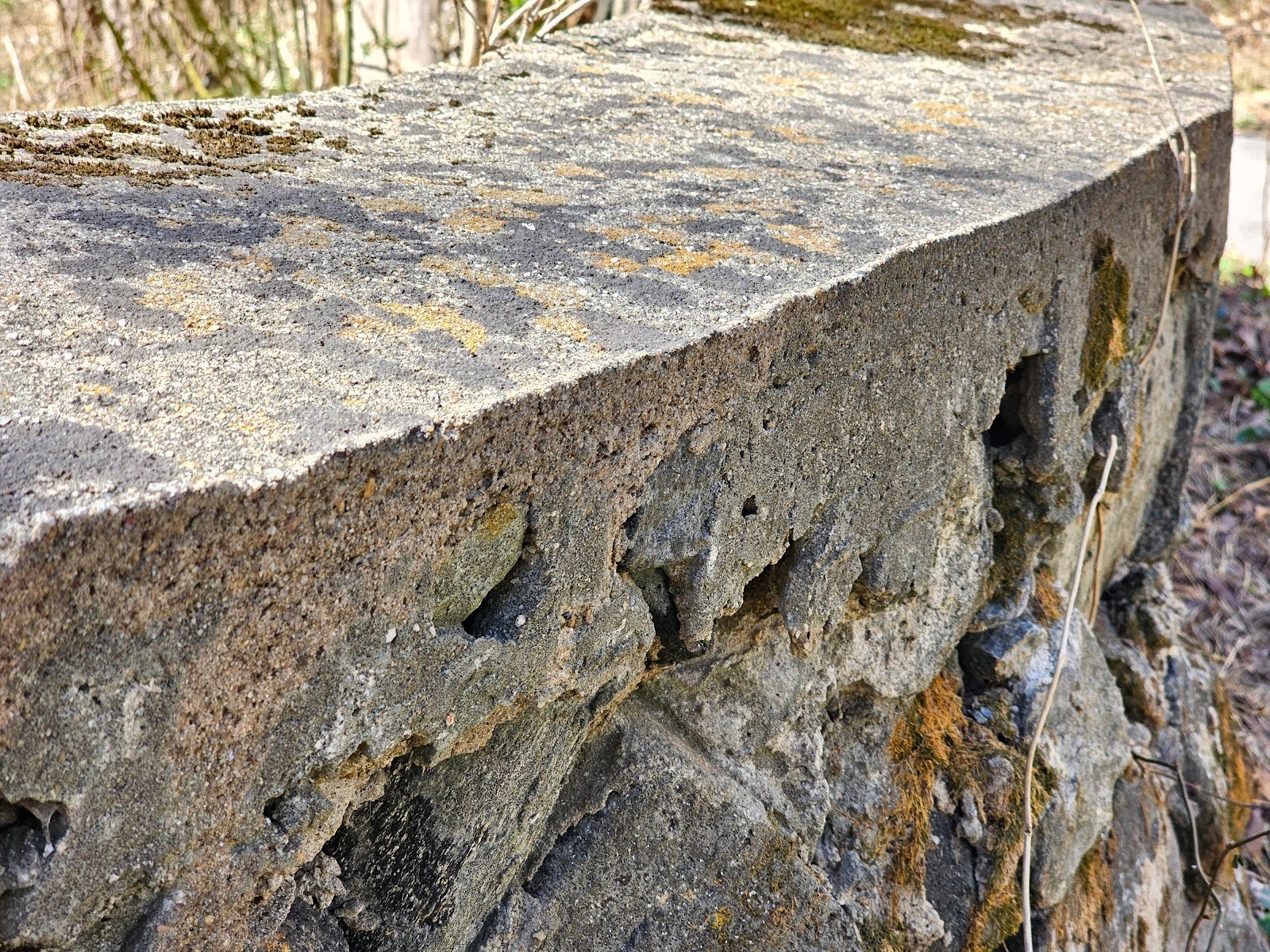
Our company, Dupont Tuckpointing and Masonry, specializes in masonry restoration, historic brick repointing, and tuckpointing services in the Washington D.C. area. These buildings are uniquely historic, and their preservation requires skilled masons who are technically trained in the best practices and knowledge of proper restoration techniques.
We understand the significance of maintaining the architectural integrity of these historic structures, and our team of experienced professionals is dedicated to delivering exceptional craftsmanship. Whether you require masonry restoration, tuckpointing, or brick repointing services, we are here to help.
At Dupont Tuckpointing and Masonry, we take pride in our work and strive to ensure that every project is executed with the utmost care and attention to detail. We are committed to preserving the rich heritage of Washington D.C.’s built environment for generations to come.
If you have any questions or needs regarding masonry restoration, historic brick repointing, or tuckpointing services, please do not hesitate to reach out to us. We would be delighted to assist you and provide you with the expertise and quality workmanship that your historic property deserves.
You can reach us by telephone at (202) 796-7644 and you can reach us by email from the contact form on our website at https://duponttuckpointingmasonrydc.com/contact-us/.




